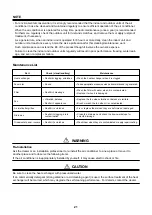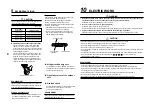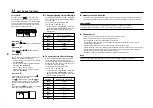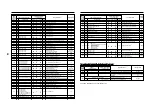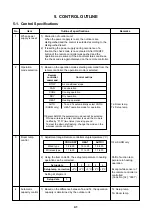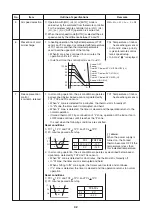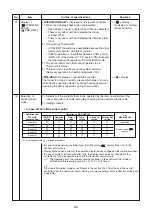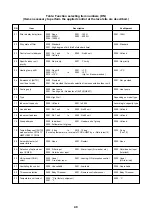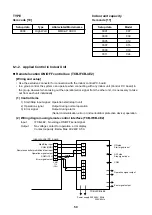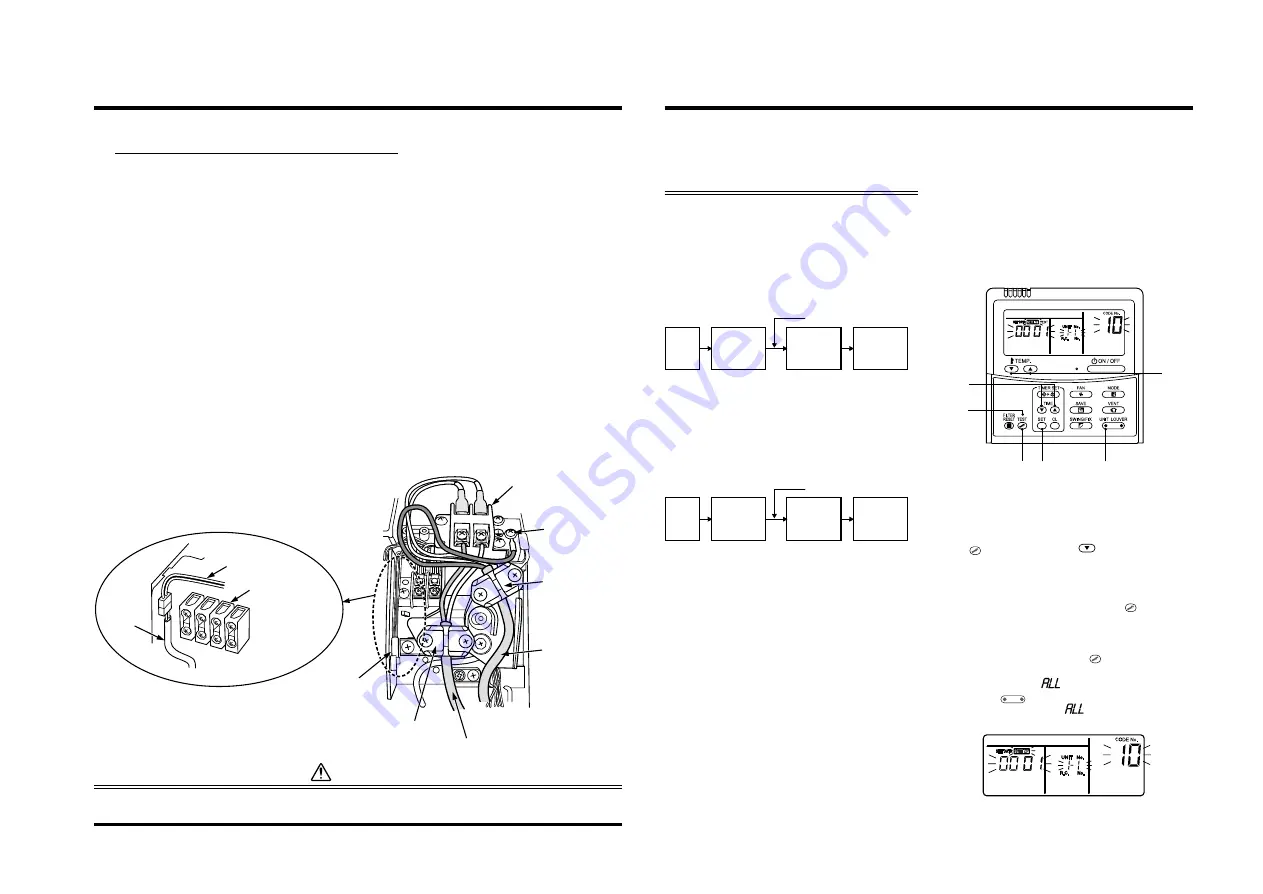
35
n
Wiring connection for flow selector unit
How to connect the wiring of flow selector unit
Connect the power supply wire and the communication wire supplied with the flow selector unit to the
indoor unit.
1. Remove the air inlet grille. Open the air inlet grille upward and pull it toward you.
2. Remove the four screws securing the front panel.
3. Slightly open the lower part of the front panel, and then pull the upper part of the front panel toward
you to remove it from the rear plate.
4. Remove the terminal cover and the clamp base.
5. Insert the control wire fully into the control/wired remote controller terminal block and secure it tightly
with screws.
6. Connect the control wire connector of the flow selector unit to the lead with a connector to the left of
the control/wired remote controller terminal block.
7. Clamp the control wire and the control wire of the flow selector unit with the cord clamp.
8. Install the clamp base with a screw.
9. Insert the power supply wire fully into the terminal block and secure it tightly with screws.
Tightening torque: 1.2 N·m (0.12 kgf·m) Secure the earth line with the earth screw.
10. Clamp the power supply wire with the cord clamp.
11. Insert the power supply wire faston terminal of the flow selector unit into the power supply terminal.
Secure the earth line with the earth screw.
12. Clamp the power supply wire of the flow selector unit tight with the cord clamp.
13. Attach the terminal cover, the front panel and the air inlet grille to the indoor unit.
CAUTION
Confirm that every wires are stored in the electric parts box without getting caught before attaching the
terminal cover.
R(L)
A
B
U
1
U
2
S(N)
Control wire
from the
flow selector
Control wire
Connector
Cord clamp
Power supply wire
Power supply wire
of flow selector unit
Earth screw for
flow selector unit
Cord clamp
Power supply
terminal block
Terminal block for
control/wired remote
controller wiring
11
APPLICABLE CONTROLS
A wired remote controller is necessary for this function.
This function cannot be operate with a wireless
remote controller.
REQUIREMENT
• When you use this air conditioner for the first time, it
takes approx. 5 minutes until the remote controller
becomes available after power-on. This is normal.
<When power is turned on for the first time
after installation>
It takes approx. 5 minutes until the remote control-
ler becomes available.
<When power is turned on for the second
(or later) time>
It takes approx. 1 minute until the remote controller
becomes available.
• Normal settings were made when the indoor unit
was shipped from factory.
Change the indoor unit settings as required.
• Use the wired remote controller to change the
settings.
∗
The settings cannot be changed using the
wireless remote controller, sub remote controller,
or remote-controllerless system (for central
remote controller only).
Therefore, install the wired remote controller to
change the settings.
n
Changing of settings of for ap-
plicable controls
Basic procedure for changing settings
Change the settings while the air conditioner is
not working. (Be sure to stop the air conditioner
before making settings.)
The display content for setting differs from that
on the former types of remote controller
(RBCAMT21E/AMT32E).
(The number of CODE NO. has increased.)
Procedure
1
Push
TEST
button and “TEMP.”
button simulta-
neously for at least 4 seconds. After a while, the
display flashes as shown in the figure.
Confirm that the CODE No. is [10].
• If the CODE No. is not [10], push
TEST
button to
erase the display content, and repeat the
procedure from the beginning.
(No operation of the remote controller is
accepted for a while after
TEST
button is pushed.)
(While air conditioners are operated under the
group control, “
” is displayed first.
When
UNIT LOUVER
is pushed, the indoor unit number
displayed following “
” is the header unit.)
Remote
controller is
available
“SETTING”
goes out
Power
on
“SETTING”
flashes
Approx. 5 minutes
Remote
controller is
available
“SETTING”
goes out
Power
on
“SETTING”
flashes
Approx. 1 minute
1
6
1
3
2
5
4
(
∗
Display content varies with
the indoor unit model.)
10
ELECTRIC WORK

